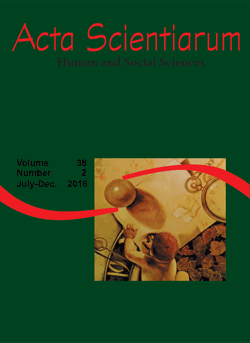<b>Study of the correlation between Ecological ICMS and environmental political-administrative structure in brazilian municipalities
Abstract
The Ecological ICMS – Tax on circulation of goods and services - (ICMS-E) is an environmental policy instrument currently implemented in 16 Brazilian states. Studies argue its effectiveness in encouraging the creation of protected areas, improvement of actions aimed at environmental protection and financial compensation capacity for municipalities that have economic limitations to explore all of its area. However, a little discussed issue is the ability to encourage and enable the creation of specific political and administrative structure for the environment. Thus, this work shows the importance of this structure at the municipal level and presents the study of the correlation between Ecological ICMS (ICMS-E) and political-administrative structure related to the environment in Brazilian municipalities. We used data from the Survey of Basic Municipal Information (MUNIC) 2013, measured by the Brazilian Institute of Geography and Statistics (IBGE) to identify the correlation between ICMS-E and the existence of public agencies and instruments related to environmental preservation. The results indicate that the ICMS-E influenced municipalities to integrate Watershed Committees, have Municipal Environmental Council, Municipal Environmental Fund, Municipal Secretary of Environment and create specific legislation to deal with environmental issues.
Downloads
DECLARATION OF ORIGINALITY AND COPYRIGHTS
I Declare that current article is original and has not been submitted for publication, in part or in whole, to any other national or international journal.
The copyrights belong exclusively to the authors. Published content is licensed under Creative Commons Attribution 4.0 (CC BY 4.0) guidelines, which allows sharing (copy and distribution of the material in any medium or format) and adaptation (remix, transform, and build upon the material) for any purpose, even commercially, under the terms of attribution.
Read this link for further information on how to use CC BY 4.0 properly.























